From the New Zealand TV Weekly. May 8, 1967
By Hannah Templeton
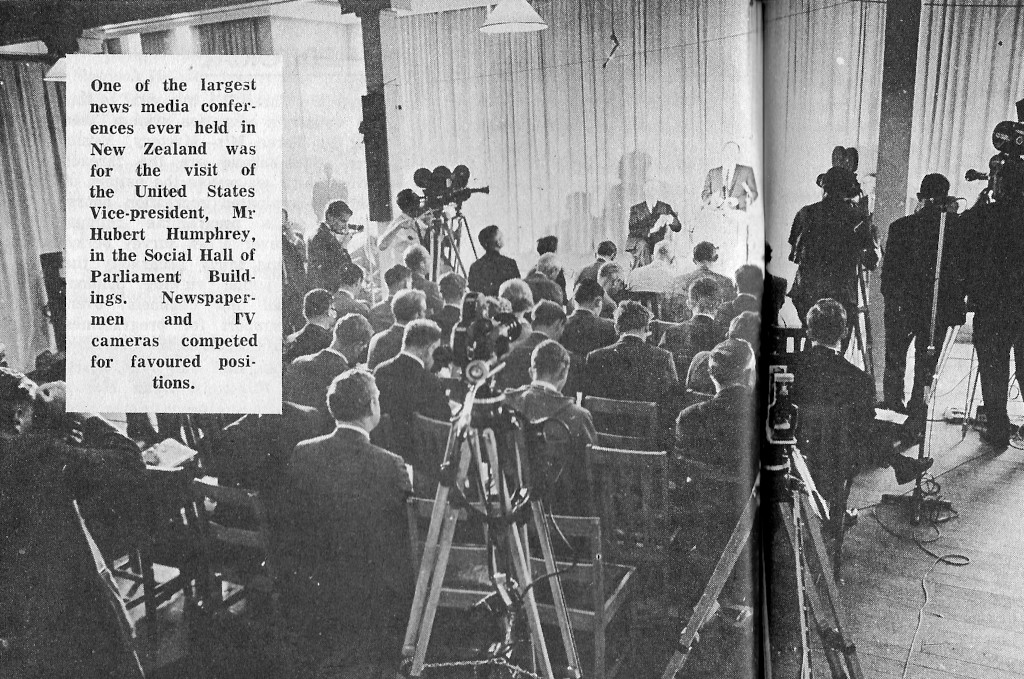
Newspapers have not yet faced up to serious competition from television news. But when television news bulletins-run at continual intervals from breakfast to midnight, then there will be little that is "new" for newspapers.
Newspapers in New Zealand, or most of them at any rate, have not yet caught on fully to what they are up against in competing with television. Fortunately for them, one-channel television under the control largely of men steeped in the traditions and practice of steam radio has not been as devastating as it might have been in developing its potential in the communication of news and information. Occasionally, though, television news has captured events, sometimes by accident, sometimes by intent, with a force quite stunning in effect. The day may come when television news bulletins, running through at intervals from breakfast time, to midnight, leave little that is "new" for newspapers. Television, someone has said, is the most wonderful innovation since the introduction of sliced bread. New Zealanders mightn't see it that way yet. To many it is still a new toy, something to look at from transmission opening to fade out. Primarily, it is an instrument of entertainment, something to tease out the daily tension of living, to obliterate the austerity of the daily job. Perhaps they might not like news bulletins intruding into the lovely make-believe world of Peyton Place and Coronation Street.
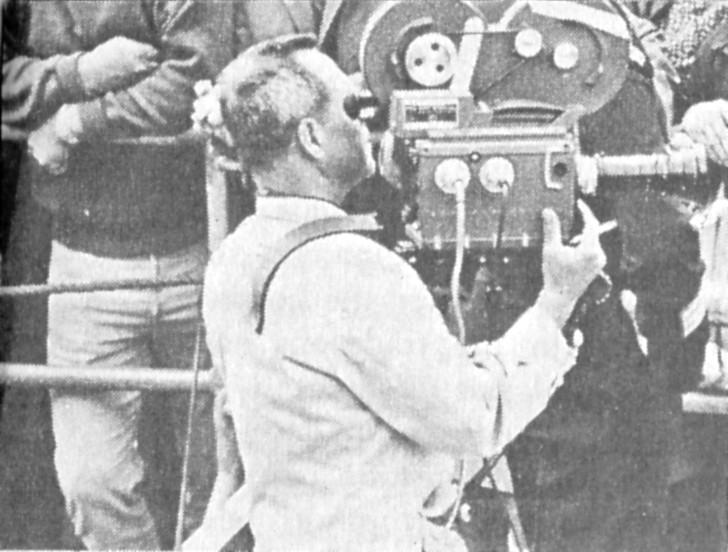
American TV cameraman covers reactions of a Wellington crowd to the visit of Air Marshal Ky.
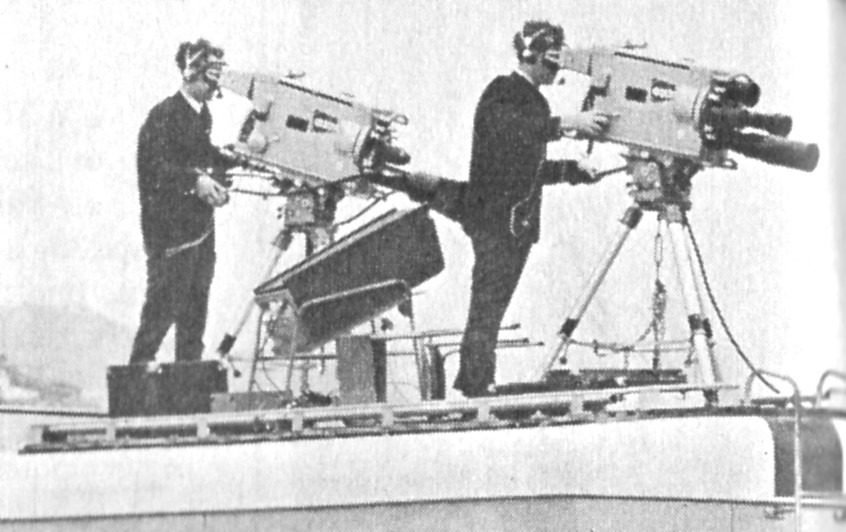
Murray Feist (left) and Michael Reid stand on top of a WNTV1 mobile van during a live telecast. Earphones enable two-way conversation between producer (inside van) and cameramen.
At this stage, the news is something that begins the evening's entertainment while people are settling down after a hard day at the office or factory bench. A 5-minute bulletin at 9 p.m. is as yet unacceptable (largely it is said because it would interfere with programme scheduling).
The kind of news that television can present with the greatest impact does not often happen in New Zealand. For example, British viewers one night in January saw Donald Campbell's Bluebird rise in the air and smash to pieces on Coniston Water, killing its pilot in the moment that the World water speed record lay before him. For most viewers, that moment had a stunning actuality about it. New Zealand television does not often get that opportunity and, naturally, it is not particularly geared or practised in the event. However, it does fairly well. For a big occasion, such as President Johnson's visit, it cranks itself up and does a very good job. The impact of President Johnson's State lunch speech was considerable in the flesh, but perhaps even greater on the screen in living rooms round the Wellington province, as it happened. This performance, however, is quite rare-which must relieve newspaper executives. Few would dispute that the actuality of television on these occasions rather takes the gilt off the story for newspapers.
Newspaper proprietors, particularly those in smaller towns, must also be relieved at the slow progress made by the NZBC in achieving national links. The effort in relaying cricket from Eden Park as far south as Mt. Kau Kau showed what lies ahead.
Since the Government barred the entry of Lord Thomson into newspapers in New Zealand, it in effect left the field open to television to develop the first national "newspaper."
Some of the executives of the NZBC news service have been known to argue that TV presentation of news items stimulates a greater interest in those items, and persuades people to turn to newspapers to find out more about the subject.
Circulation figures, either here or in Britain, hardly back up the argument; though that is not necessarily conclusive.
One or two NZBC men are mastering the art of television interviewing, but the general level is not high. Too often the interviewer sticks to his list of questions-which one suspects have been discussed with the subject beforehand-rather than follow up with other questions to pin the subject down to specific answers.
The NZBC so far clings to newsreaders, rather than using newscasters, though it is showing some enterprise in assigning journalists to do an occasional news report, which is intermixed into the general news bulletin. Human reading machines are safe but dull. Newscasters-television journalists with professional skill and authority-will probably only come on the scene, as they did in Britain, after a competitive element is introduced into television. Unlike the newsreader, the newscaster shares in the writing and presentation of news. His work has "personality" in the sense that a good newspaper article has "personality"-the distinctive style of an individual person.
Perhaps it is fortunate for newspapers (which themselves are reluctant to use "personality" too much) that the NZBC continues its cult of the anti-personality to the extent of ruling out newscasters with individual techniques.
Not all the news is exciting, nor can it be made so even by the liveliest of newscasters. How much of this routine material can be presented on television without driving viewers out of the room? Will newspapers be content to have second run at material at which the television news has had first bite?
Television is evanescent. The printed word is there for all time, and you can refer back to it. But once off the screen, the news item is quickly forgotten and not easily recalled. Clearly, where news can be made visual, television will score heavily; but where the written word is dominant, the field will remain the newspapers'.
The other advantage the newspaper retains is that a television bulletin involves a more difficult Choice by the sub-editor in deciding the priority of items.
News dissemination, once the monopoly of newspapers, is now part of the function of the newest mass media. To inform is different from to entertain. Television has yet to resolve completely the dichotomy-if it ever can. Obviously, television and the newspapers are still adjusting to the new situation.
Let's hope the future holds some real competition that stimulates readers and viewers, and not least, journalists.
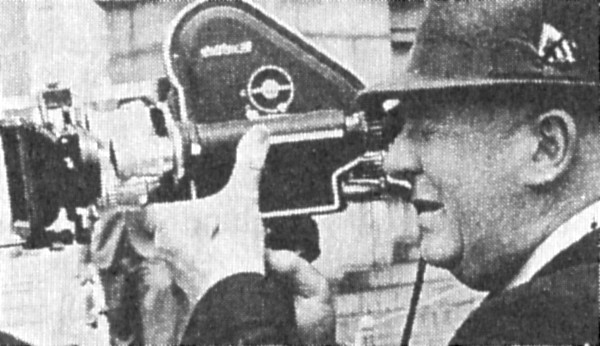
WNTV camerman Joe Wright is an Englishman from Pathe News. He specializes in "mute" news work, the filming of subjects withour sound.

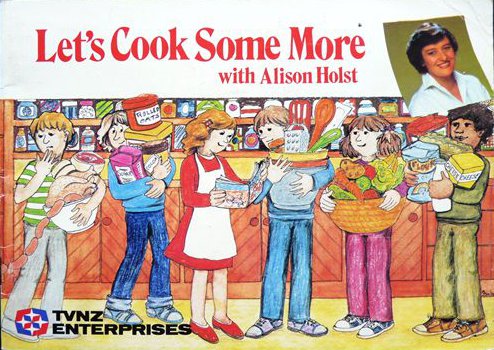
Comments powered by CComment